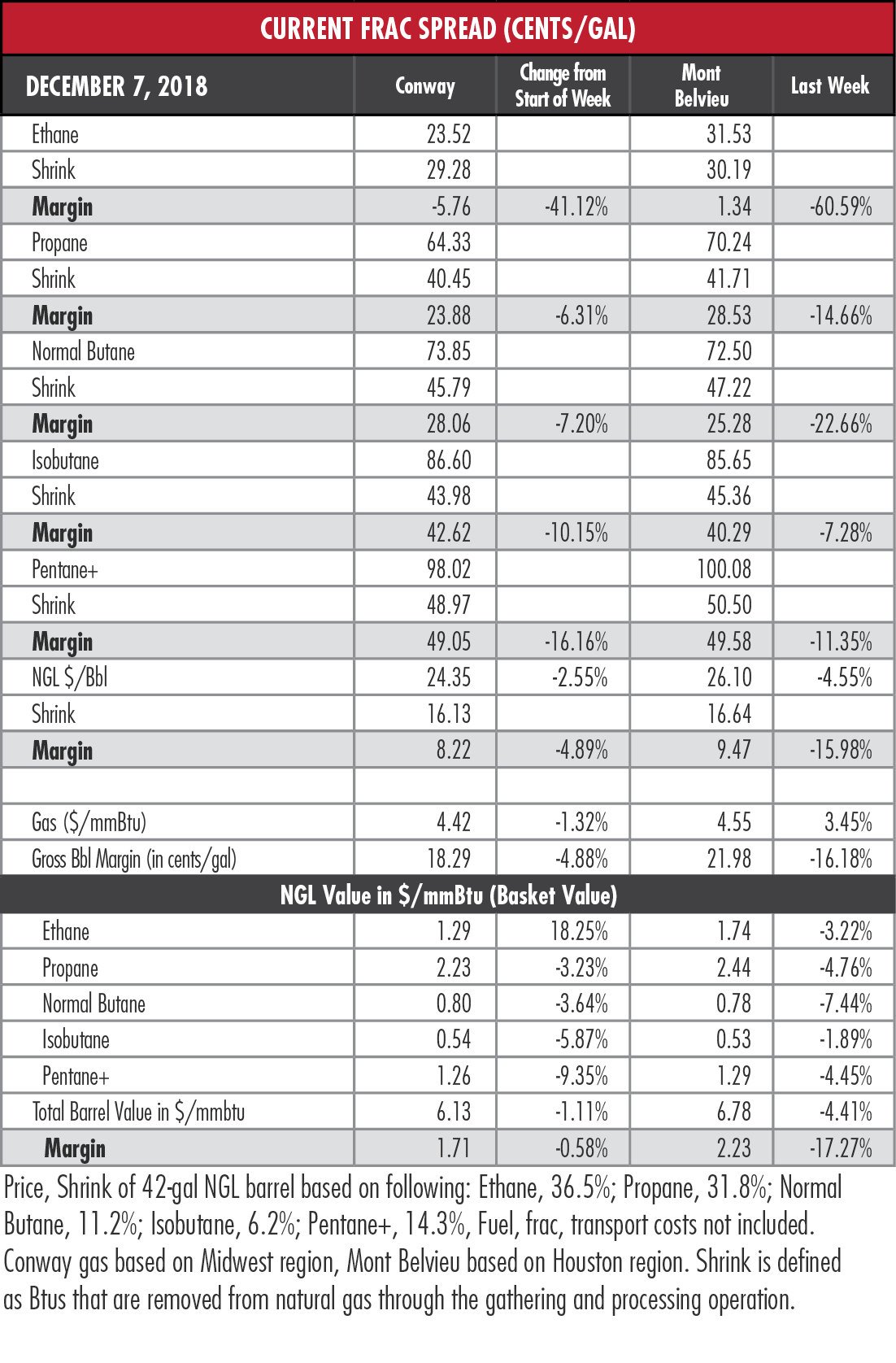
A house in Brooklyn, N.Y., shown in November 2017, is an example of holiday light displays that impact the natural gas market. (Source: Shutterstock)
Your neighbor’s over-the-top holiday light display does more than keep you awake and blind Russian spy satellites. It also influences the late-year electricity market and, by extension, the market for natural gas that fuels power generation facilities.
“In years past the industry estimated that we saw as much as a 10% increase in power demand near Christmas and the New Year from decorative lighting,” said EnVantage Inc. in a recent report. “As time passes, this impact is diminishing due to the adoption of LED decorative lighting. We are still in the replacement cycle of older incandescent lighting but the ultimate impact over time is that the ‘bump’ we see every December will take on a diminished role.”
 The analysts admit that it is difficult to gauge how illuminating armies of Frosty the Snowman affects natural gas supply and demand. Natural gas prices have been volatile, though EnVantage sees strength in the fundamentals.
The analysts admit that it is difficult to gauge how illuminating armies of Frosty the Snowman affects natural gas supply and demand. Natural gas prices have been volatile, though EnVantage sees strength in the fundamentals.
How volatile? The Permian Basin price at Waha crested at $3.85 per million British thermal units (MMBtu) on Nov. 13. Two weeks later the price had collapsed to 30 cents/MMBtu. As of Dec. 4, it had rebounded to $1.36/MMBtu. The December basis closed at -$4.56/MMBtu on Dec. 4.
EnVantage explained the wayward price movements as stemming from the startup of Plains All American LP’s Sunrise Pipeline expansion from Midland to Colorado City and Wichita Falls, Texas, with connections to Cushing, Okla. The crude oil pipe allows for greater production of oil from the Midland Basin, but also for greater production of associated gas, in fact an estimated 750 million cubic feet per day. Of course, there’s nowhere for the gas to go because of natural gas pipeline constraints in the region, hence the plunging price at Waha.
 The NGL outlook is to some extent dependent on the status of the Mariner East 1 and Mariner East 2 pipelines. Residents of Chester County and Delaware County, Pa., petitioned to shut down Mariner East 1 and prevent startup of Mariner East 2, arguing that Sunoco Logistics was in violation of state laws on the safe operation of utilities.
The NGL outlook is to some extent dependent on the status of the Mariner East 1 and Mariner East 2 pipelines. Residents of Chester County and Delaware County, Pa., petitioned to shut down Mariner East 1 and prevent startup of Mariner East 2, arguing that Sunoco Logistics was in violation of state laws on the safe operation of utilities.
On Dec. 4, a report commissioned by Delaware County declared that residents living directly adjacent to the pipelines were more likely to die from falling down the stairs than a rupture of either pipe. Opponents of the projects remain unconvinced.
Reduced demand and continued strong natural gas prices have narrowed the Mont Belvieu, Texas, ethane margin to 1.34 cents per gallon (gal), down from 3.4 cents/gal a week ago. Ethane rejection, EnVantage reasons, should be increasing so supply would come from the inventory stored in Gulf Coast salt domes.
However, new ethane cracking capacity of about 170,000 barrels per day will come online in second-quarter 2019. With the salt domes holding less than a 20-day supply, the market could tighten and bounce prices back into the 50 cent/gal to 60 cent/gal range.
 “If this spike does occur, it would be an excellent opportunity for producers to hedge ethane frac spreads,” said EnVantage, “because it is likely these high spreads will not last long.”
“If this spike does occur, it would be an excellent opportunity for producers to hedge ethane frac spreads,” said EnVantage, “because it is likely these high spreads will not last long.”
Joseph Markman can be reached at jmarkman@hartenergy.com or @JHMarkman.
Recommended Reading
E&P Highlights: Dec. 2, 2024
2024-12-02 - Here’s a roundup of the latest E&P headlines, including production updates and major offshore contracts.
E&P Highlights: Jan. 6, 2025
2025-01-06 - Here’s a roundup of the latest E&P headlines, including company resignations and promotions and the acquisition of an oilfield service and supply company.
TotalEnergies Awards SBM Offshore FPSO GranMorgu Development Contract
2024-11-15 - SBM will construct and install a floating production, storage and offloading vessel for TotalEnergies alongside its partner Technip Energies, the company said.
What Chevron’s Anchor Breakthrough Means for the GoM’s Future
2024-12-04 - WoodMac weighs in on the Gulf of Mexico Anchor project’s 20k production outlook made possible by Chevron’s ‘breakthrough’ technology.
E&P Highlights: Dec. 9, 2024
2024-12-09 - Here’s a roundup of the latest E&P headlines, including a major gas discovery in Colombia and the creation of a new independent E&P.
Comments
Add new comment
This conversation is moderated according to Hart Energy community rules. Please read the rules before joining the discussion. If you’re experiencing any technical problems, please contact our customer care team.






